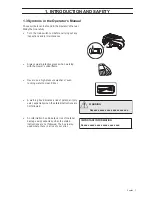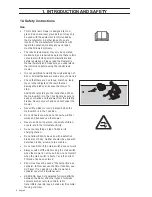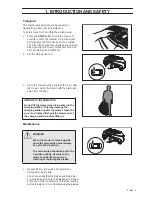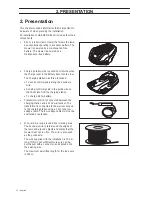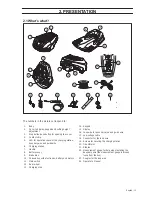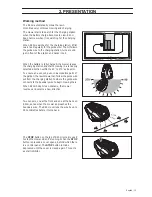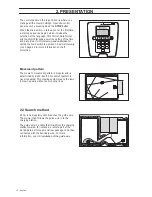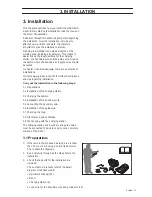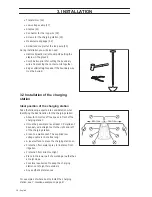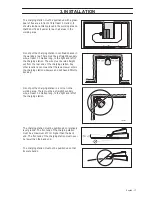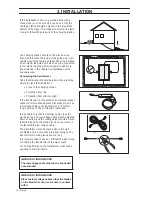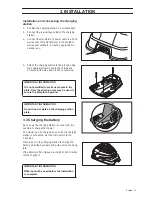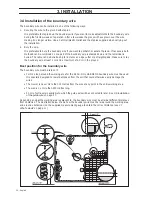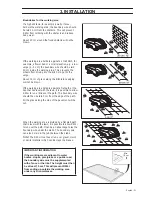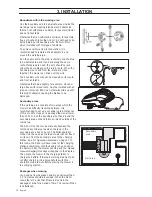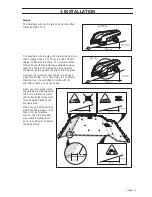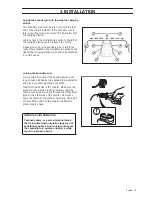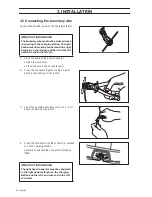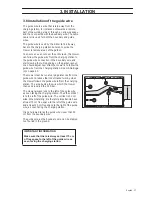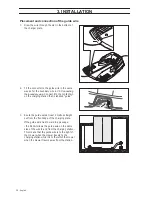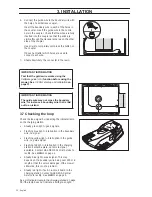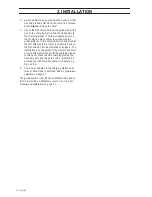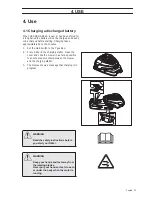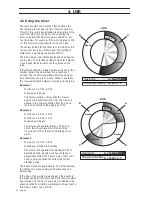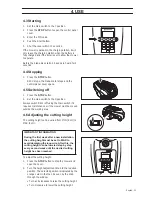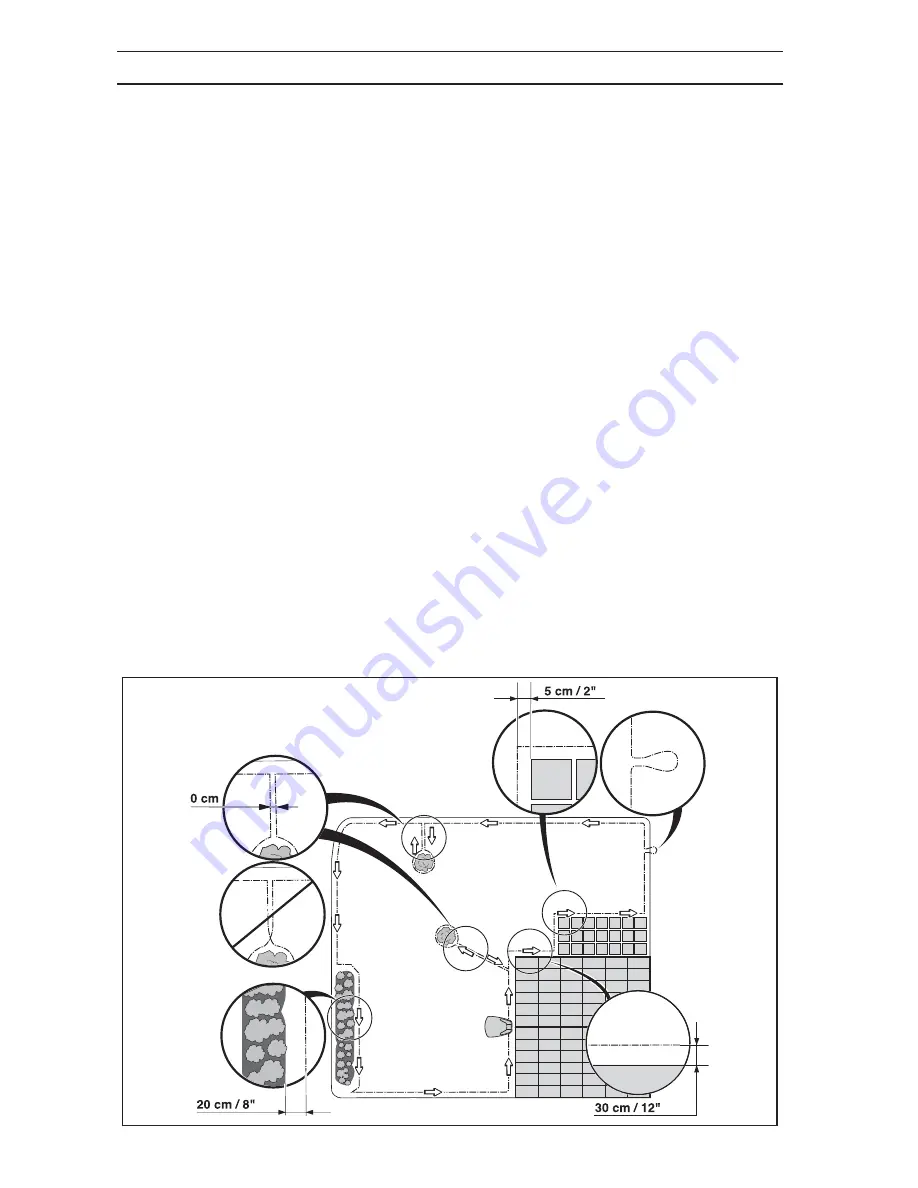
20 - English
3. INSTALLATION
3.4 Installation of the boundary wire
The boundary wire can be installed in one of the following ways:
1.
Securing the wire to the ground with staples.
It is preferable to staple down the boundary wire if you want to make adjustments to the boundary wire
during the first few weeks of operation. After a few weeks the grass will have grown over the wire
making it no longer visible. Use a hammer/plastic mallet and the staples supplied when carrying out
the installation.
2.
Bury the wire.
It is preferable to bury the boundary wire if you want to dethatch or aerate the lawn. If necessary both
methods can be combined so one part of the boundary wire is stapled down and the remainder is
buried. The cable can be buried using for instance an edge cutter or a straight spade. Make sure to lay
the boundary wire at least 1 cm and a maximum of 20 cm in the ground.
Best position for the boundary wire
The boundary wire must be laid so it:
• Forms a loop around the working area for the R40Li. Only GARDENA boundary wire must be used.
It is specially designed to resist dampness from the soil that could otherwise easily damage the
wires.
• The mower is never more than 15 metres from the wire at any point in the entire working area.
• The wire is no more than 250 metres long.
• 20 cm of extra wire is available to which the guide wire will be connected to later. See
3.6 Installation
of the guide wire
on page 27.
Depending on what the working area is adjacent to, the boundary wire must be at laid at different distances
from obstacles. The illustration below shows how the boundary wire must be laid around the working area
and around obstacles. Use the supplied measurement gauge to obtain the correct distance (see
2.1
What’s what?
on page 11 ).
Summary of Contents for R40Li
Page 1: ...Operator s Manual GARDENA Robotic Lawn Mower R40Li...
Page 2: ......
Page 68: ......
Page 69: ......


